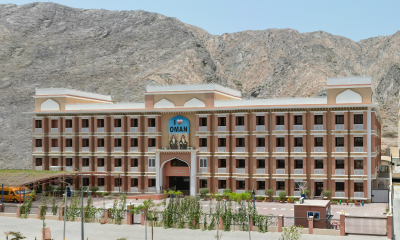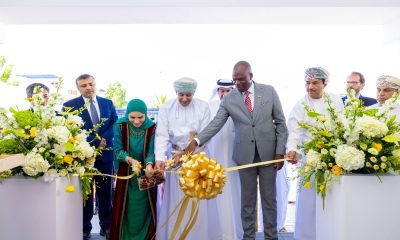Progress Oman
Data-led growth
Enhanced investment and new technological upgradation have enabled the major telecom operators to post strong numbers


Oman’s telecommunication service providers have performed well in the first quarter of this year, thanks to better demand for telecom services supported by the robust economic activity. In fact, a strong growth in broadband data service has compensated a fall in revenue from short message service (SMS) and international calls provided by multinational giants like WhatsApp. Heavy investments in network expansion, broadband connection even in far-flung areas and innovative services have all helped the companies to achieve better results, despite cut-throat competition and saturation in mobile and fixed line services.
Investment led growth
In the last couple of years, the majority state-owned Oman Telecommunications Company (Omantel) has invested heavily in fixed line infrastructure, latest 4G technology and for expanding high-speed broadband network. Similarly, Oman Qatari Telecommunication Company (popularly known as Ooredoo) has invested in 4G technology, broadband data capability, fiber optic network and turbo-charging programme. All these are in line with the global trend in state-of-the-art technologies and new services. Ooredoo has invested close to RO80 million in 2013 for expanding and upgrading network and a similar capital investment is expected in the coming years as well.
According to latest statistics, Omantel has achieved 96 per cent coverage in the case of 2G network. The national telecom firm has also increased its home broadband speeds for its large number of customers across the Sultanate. Customers with home broadband plans have already been upgraded to the new speeds based on their individual subscriptions. Ooredoo is not behind either as the company has launched their new 4G/LTE Home Broadband services for prepaid and postpaid customers in the recent past. Using their LTE network gives customers an online experience up to three times faster than 3G, for everything from surfing to movie downloads, music streaming and online gaming. The launch of LTE broadband places Oman alongside the world’s leading countries. Both telecommunication firms – Omantel and Ooredoo Oman – have performed well in the first quarter. Oman Telecommunications Company has posted a 7.6 per cent growth in net profit at RO129.4 million in the first quarter of 2015, over the same period last year, while the group’s net profit edged up to RO34.6 million from RO34.4 million during the period. Net profit has been impacted by the losses incurred by its subsidiaries. However, the domestic performance continues to be impressive achieving a revenue growth of 8.4 per cent to RO127.5 million against RO117.6 million for the same period of 2014, while domestic net profit increased by 5.1per cent to RO35.9 million.
The Sultanate’s second leading telecom firm, Ooredoo Oman, has achieved a robust 22 per cent growth in net profit at OMR10.7 million in the first quarter of 2015, over the same period last year. The company is reaping the benefits of its heavy investment in network expansion over the past few years. The company’s revenue was RO59.3 million for the first three months of this year, against RO52.7 million for the same period last year. The majority of revenue growth for both companies is being contributed by the broadband business, especially mobile broadband service. In the case of Omantel, its carrier-to-carrier business will emerge as an important contributor to the company’s growth in the coming years. In recent years, the company has invested in several trans-national cable networks like Asia-Africa-Europe submarine cable network. Apart from strategic location, political stability is considered as an important factor that helped Oman attract landing stations to the country. These investments underscore the strategy of diversifying away from traditional telecommunication services and exploiting growth opportunities outside the country.
The Sultanate has around 7,500km of optic fibre network connectivity and the introduction of inter-connection of optic fibre network has helped telecom firms to avoid disruption in service during bad weather conditions. In fact, the speed of Internet services is expected to improve in the future as telecom firms are switching over to high-speed fibre optic cable networks for the next phase of long-term development, which is mainly supported by Oman Broadband Company.With the recent formation of a new state-owned entity for fiber optic network (Oman Broadband Company), the initiative is expected to speed up in the coming years, mainly in the Muscat governorate. All these initiatives are also in line with the Telecommunications Regulatory Authority’s (TRA) national broadband strategy, aiming to introduce high-speed Internet connection throughout Oman, especially in far-flung places. TRA has launched the National Broadband Strategy in 2010, which aims to introduce a broadband connection into every home and business.
-

 Banking & Finance2 weeks ago
Banking & Finance2 weeks agoOman Oil Marketing Company Concludes Its Annual Health, Safety, Environment, and Quality Week, Reaffirming People and Safety as a Top Priority
-

 Economy2 months ago
Economy2 months agoMaal Card: What Oman’s New National Payment Card Means for Everyday Users
-

 News2 months ago
News2 months agoSheikh Suhail Bahwan, Chairman of Suhail Bahwan Group, Passes Away
-

 News1 month ago
News1 month agoOIG Appoints New CEO to Lead Its Next Chapter of Excellence
-

 Economy2 months ago
Economy2 months agoOman Unveils Official Omani Rial Symbol in Landmark Move to Boost Global Currency Presence
-

 News1 month ago
News1 month agoReport: How India & The Middle East Are Exploiting Immense Economic Synergies
-

 Uncategorized1 month ago
Uncategorized1 month agoOman’s ISWK Cambridge Learners Achieve ‘Top in the World’ and National Honours in June 2025 Cambridge Series
-

 Trade1 month ago
Trade1 month agoConsulate Office of the Republic of South Africa opens in Muscat, enhancing bilateral relations




























You must be logged in to post a comment Login